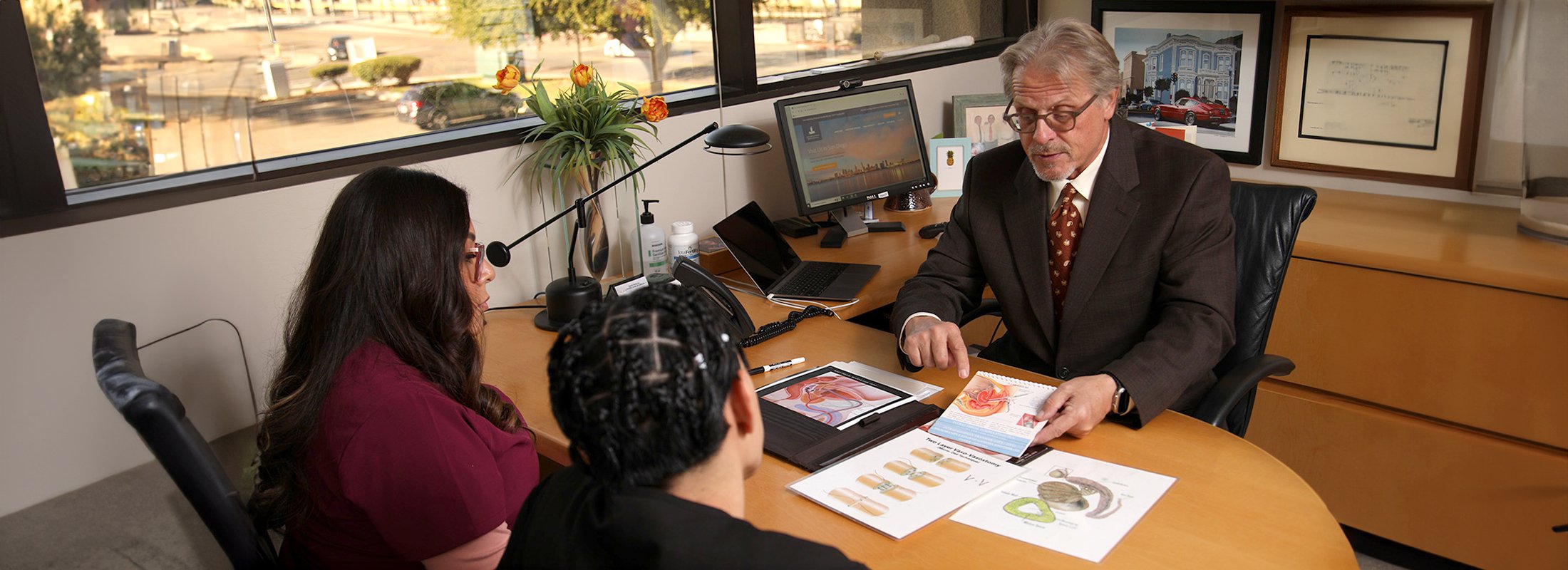Spinal Cord Procedures & Fertility Preservation
There are approximately 10,000 new spinal cord injuries every year in the U.S. The majority of these injuries occur in healthy men of reproductive age (typically around 30 years) and can affect their sexuality and fertility. Depending on the degree of injury, men often report a decreased sexual desire and problems with erection and ejaculation, making the ability to have children seem impossible. If a spinal cord is injured there are many resulting factors that may cause infertility. Ejaculatory dysfunction, abnormalities of sperm production, chronic infections and blockage of sperm within the male reproductive tract are all potential symptoms of spinal cord injuries which may decrease fertility.
- As a spinal cord injury patient, can I still have children?)
- What are my SCI fertility treatment options?
- What are my chances of having children?
- How does my partner prepare for the fertility treatment?
As a spinal cord injury patient, can I still have children?
Yes. At the Fertility Center of California, we can help patients with a spinal cord injury fulfill their dreams of having children. Sperm testing, analysis and procedures to obtain ejaculate for insemination are routinely performed at our facilities. If you decide to undergo sperm retrieval, we recommend freezing your sperm for future use in our sperm bank.
What are my SCI fertility treatment options?
Management of male infertility due to spinal cord injury includes a number of different methods to obtain sperm. Please note that none of these techniques should be applied to a male spinal cord injury patient before undergoing a thorough medical evaluation. The sperm harvesting techniques are often combined with various forms of assisted reproductive techniques.
Vibration Technique:
Sperm can often be obtained through vibratory stimulation to the head and shaft of the penis if the level of injury is T-12 or above. This technique is less often successful for lower motor neuron (areflexic) injured patients.
Rectal Probe Electroejaculation (EEJ):
The technique stimulates sperm via a small electric current applied in the prostate area to produce an ejaculate. A common side-effect is inflammation to the rectal mucosa. In patients with spastic injuries, this technique tends to cause autonomic dysreflexia.
Testicular Biopsy or Vas Aspiration:
These are invasive sperm harvesting techniques mostly used for patients with acquired or congenital obstructions along the reproductive tract. Sperm is retrieved either along the ejaculatory path from the vas deferens, epididymis, or directly from the testis. The techniques are commonly known as MESA (microsurgical sperm aspiration), TESE (testicular sperm aspiration) and PESA (percutaneous epididymal sperm aspiration).
Once sperm has been obtained, the semen is then processed for one of the following assisted reproductive techniques:
Artificial Insemination: IUI and ICI
Both IUI and ICI are routinely performed at FCC. Read more about artificial insemination.
In Vitro Fertilization with Intracytoplasmic Sperm Injection (IVF with ICSI)
During in vitro fertilization (IVF), the eggs are retrieved from a female’s ovaries and then combined with sperm in a laboratory dish. During ICSI, a single sperm is injected into an egg to fertilize the egg which will then become an embryo.
What are my chances of having children?
Research data shows that the pregnancy success rates of spinal cord injury patients lies at 51% and is greatly increased when advanced fertility techniques are used to achieve the pregnancy. The average live birth rate is 40%, which is also higher with the use of fertility treatments. The various methods of sperm retrieval do not affect the success rates.
How does my partner prepare for the fertility treatment?
It is important for the success of your fertility treatment that the woman plays an active role in the process. Before starting fertility treatment of the male, we highly recommend that the female undergoes a thorough gynecological exam with a physician. Once it is concluded that there are no female fertility issues, her ovulation cycle is tracked. This information is used to schedule the sperm retrieval procedure when she is fertile in order to undergo artificial insemination. Artificial insemination should occur within 1 hour of sperm retrieval if fresh sperm is being used.






